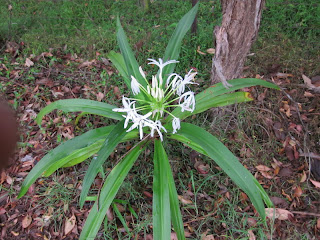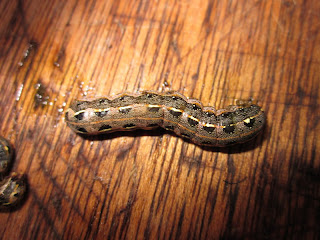When my wife and daughter were at the local health food shop they noticed a plant product being touted as a "super food". Being the skeptic that I am, here is my take on it (note that we don't grow it, and it looks like it is a high altitude cold climate plant anyway).
Binomial name :
Lepidium meyenii
Common name : Maca, Peruvian ginseng
Description : a mat like perennial plant with tuberous roots resembling a radish. The roots are yellow or purple or a combination of the two. The roots are rich in sugars, starches, protein (13-16%), iron and iodine. Taste of the dried roots is reported to be sweet but spicy - boiled it is sweeter than cocoa (which is actually pretty bitter to my palate)
History : This is another Incan food that was widely grown - there are hundreds of square kilometres of terraces in the Lake Junin area of north Peru ,that seemed to have been used historically to grow it. This area is very cold and is barren and rocky such that even potatoes don't grow. The roots were dried and stored and used for trade for lower altitude foods. For the Incans ,and indeed in Peru today, this food is valued as it reputedly enhances fertility in humans and livestock. There is archeological evidence for it's use dating back to about 1600 B.C.
The free internet book -
Lost crops of the Incas has a really good chapter on this plant:
http://www.nap.edu/openbook.php?record_id=1398&page=56
Pubmed - search term
Lepidium meyenii
Abstract 9 : This was a review of 4 randomised controlled trials. Two trials showed that Maca had a postive effect on sexual dysfunction and libido in healthy menopausal women and men. One trial showed no effect on healthy cyclists!. The last trial reported on showed a positive effect for male erectile dysfunction. That is an interesting one as I have quite a few male patients looking for help with that!
Abstract 12: Maca had a bone density increasing effect on ovarectomised rats. This means it potentially is useful for osteoporosis in oestrogen deficient women
Abstract 22: Maca had a potent blocking effect on an enzyme called ACE (angiotensin converting enzyme). This enzyme is blocked medically in patients with hypertension and thus Maca would probably lower blood pressure as well. No doubt phenolic compounds in the plant would also lower blood sugar and cholesterol, but this was not really reported in this abstract.
There were more studies on Pubmed as well but those were the ones that I found interesting.
As regards being a superfood - note that the sites touting this also are selling it, no doubt at a good profit margin. I bet the poor farmers in Peru don't make much out it. In my opinion, it is ok as a supplement but we have access to other fresh foods such as kale and brocolli and lots of fresh fruit that would be probably better. I certainly would not bother buying it here , but would be interested in trying it, if we ever get to go to Peru. Medically it might be worth trying for the reasons given in abstract 9.
Tom






















































